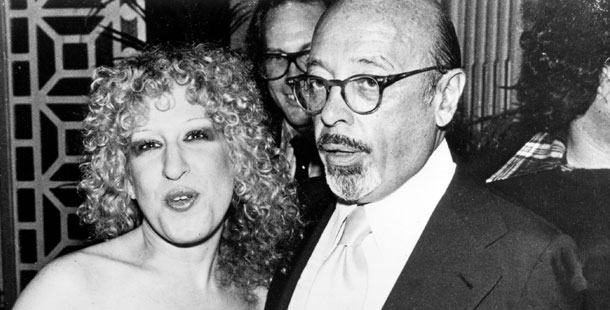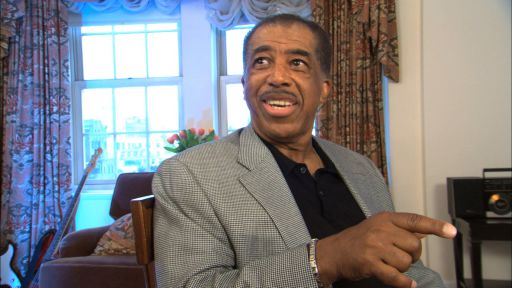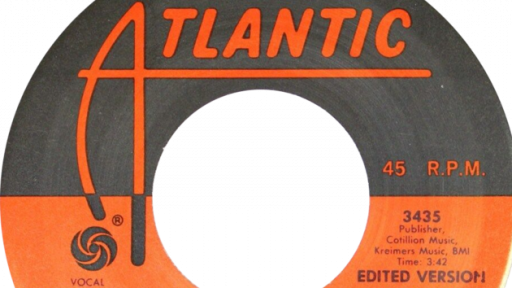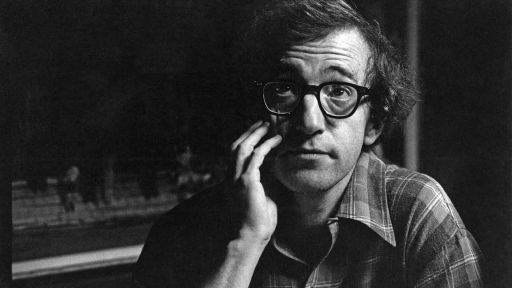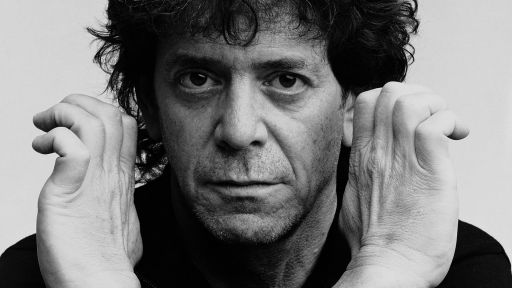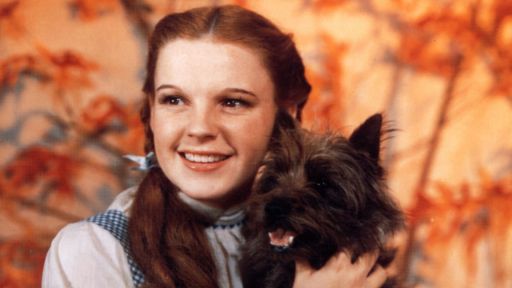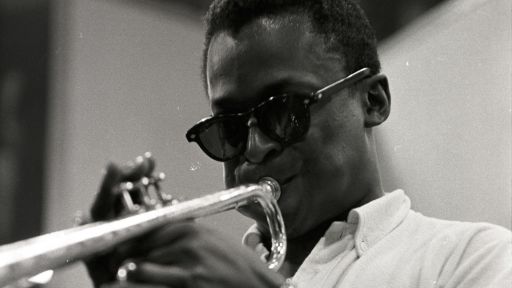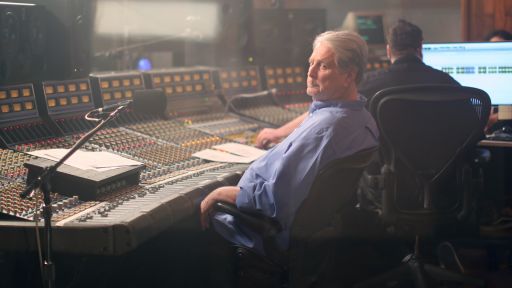Since her introduction to filmmaking through the classic rock documentaries Woodstock and Gimme Shelter, Susan Steinberg has developed an intriguing body of work on subjects as diverse as Edward R. Murrow and Paul Simon. In interviews both before and after Ahmet Ertegun’s death in December, the director discusses AMERICAN MASTERS Atlantic Records: The House That Ahmet Built.
Q: What in your filmmaking background prepared you for this project?
A: AMERICAN MASTERS executive producer Susan Lacy hired me to do this because I have a background in music and in journalism. I’ve always been very interested in the field of communications and the powers that be. My first film for AMERICAN MASTERS was on Edward R. Murrow, the famed journalist who basically created broadcast journalism in the United States as we know it. Susan then asked me to direct 90 Minutes on 60 Minutes about the news broadcast magazine format show. My early days I spent working as an editor and an assistant on Gimme Shelter, on Woodstock and on a film that Robert Frank did called C***sucker Blues, a notorious underground film on the Rolling Stones. I also was the supervising editor on the AMERICAN MASTERS film on Ray Charles and made History of Rock n’ Roll in Ten Minutes for the Rock and Roll Hall of Fame Museum, which Ahmet was very involved with. I had a background that he could respect. I had a combination of dealing with powerful people and music. I think I was a natural choice for Susan to direct this film on Ahmet and Atlantic Records.
Q: Tell us about your initial interaction with Ahmet Ertegun.
A: Susan Lacy set it up so that I would meet him when he went with his niece to a dinner at Princeton University where Ahmet, in honor of his father, had sponsored a chair for the Turkish Department. What struck me, in particular, was the way he conducted a dinner party that night. He rented a private dining room, set up the tables in an open square and carefully orchestrated the placement of the guests, who were virtual strangers. Before the night was over, this diverse group of people were laughing and talking as if they had known each other for years, listening to Ahmet tell hilarious stories. That’s when I first saw Ahmet, the son of a diplomat, at work.
Ahmet is a very eloquent, well-educated man, who is also very funny. He doesn’t speak in sound bites. Having seen him interviewed in other films, I had never seen the real Ahmet. The past interviews had showed what he knew, but not his personality, nor his character. While watching him at the dinner party something occurred to me: Ahmet is very sociable and his personality comes alive when he is in conversation. I discussed with Susan Lacy the idea of structuring the film around a series of conversations between Ahmet and the people he felt had been most important to him personally and professionally over the years, people whose lives had affected Atlantic Records and, in turn, whose lives Ahmet had affected. Ahmet gave Susan Lacy, the producer Phil Carson and I a list of these people and that’s whom we went to see.
Q: Who was on the list?
A: Everyone. Mick Jagger. Robert Plant. Bette Midler. His friend Henry Kissinger, his close friend Julio Mario Santo Domingo. Jimmy Page. Phil Collins. Ray Charles. Aretha Franklin. Eric Clapton. And many more. It took us over four years to get all these people with Ahmet, on film. Of course, none of us could have known that this would be the last time. These filmed conversations took on another quality that could not have been anticipated. Ahmet died on December 14, 2006, just six weeks after we had completed our final interview with him.
Q: Ertegun discovered a love of music at a very early age, correct?
A: Oh, yes. There’s a wonderful story of Ahmet growing up that’s told by his sister, Selma, who lives in Turkey. When Ahmet was about three years old, an aunt drew him a picture of an old-fashioned phonograph. Ahmet was delighted. He then said, “Put the record on.” So they drew the record. And then he said, “Play it.” Obviously, they couldn’t play it. Ahmet started to cry, saying “Play it, play it.” He wouldn’t give up until he wore himself out.
His passion and love of music began early. His mother played several instruments and she loved Turkish music. His older brother, Nesuhi, who was his mentor, fell in love with jazz as a young boy growing up in Paris. He would bring home jazz records and play them for his baby brother. Right from the start, Ahmet and Nesuhi had discovered their true love, jazz.
Q: Did he always know he was going to become a music producer – and did his father have a different idea?
A: He started out as a music lover and a record collector. He and his brother had collected 25,000 records, one of the largest jazz/blues collections in the world. At first it was a passion and a hobby. He said that everyone, including his father, expected that he would enter the diplomatic corps, saying “If my father had not died, I don’t think I would have been able to start Atlantic Records.” He had the brains and wherewithal to be a fantastic diplomat, which he exhibited throughout his entire career. Whether dealing with the Turkish government or with finicky artists or men in the record business, Ahmet utilized his tremendous diplomatic skills. Although he had strong opinions on almost everything, he could get along with anyone.
Q: What makes him an American Master?
A: Consider the fact that American pop culture, including music and movies, is probably one of the largest exports of this country. American music has influenced the world and Ahmet was one of the major players in making that happen. He fell in love with indigenous black American music and he brought it to the world. He wasn’t the only one, but he was pivotal. In Britain during the ’60s, there were all these talented young kids who had grown up listening to Atlantic Records, to Ray Charles, Clyde McPhatter, Big Joe Turner, Otis Redding, Wilson Picket. These kids were mesmerized by the same sounds that had seduced Ahmet – rhythm and blues, blues and jazz. Ahmet was attracted to these young musicians and they were attracted to him. It wasn’t surprising that Atlantic became the record company of choice for the up and coming British rockers of the ’60s: Cream, Blind Faith, the Stones, and Led Zeppelin.
Q: Speaking of that time period, you use clips from the controversial film on the Rolling Stones, C***sucker Blues, which was considered unreleasable because of its unabashed depiction of sex, drugs and rock and roll. How did you happen to include it in this film?
A: My first job as a film editor came about when Robert Frank, the famous photographer, hired me to edit this film that he had shot on the 1972 Rolling Stones tour of America, which coincided with the Stone’s release of the LP, Exile on Main Street. This was the second album the Stones made after they signed to Atlantic. There was footage of Ahmet backstage with Mick Jagger and friends. Since this was one of the few pieces of film that actually showed Ahmet hanging out with the bands backstage, something he often did, I wanted to include it. In fact, many say that Ahmet’s secret ingredient to success was his ability to hang out with the best of them. When we filmed the Mick Jagger and Ahmet together, I asked them about the film and they were so funny that I couldn’t resist including a bit of it in the program. The Stones gave us permission to do so.
Q: I wonder about the early Atlantic artists. All the successful musicians that Atlantic signed didn’t get rich like the Stones?
A: Oh no, of course not. One of the controversies that we dealt with in the film surrounded the royalty issue brought out in the open by early R&B artists like Ruth Brown against Atlantic. In the early days, the practice of paying royalties was almost nonexistent. Ahmet and Atlantic were generous on an ad hoc basis, like paying hospital bills for the young Ruth Brown, or paying for Joe Turner’s funeral. But when it came to royalties, they were surprisingly no better than the other record companies. It wasn’t a question of race. Leiber and Stoller speak of not getting royalties due to them from another record company after their song “Hound Dog,” first recorded by Big Mama Thornton, was a huge success. The whole world of R&B was run without great regard for artists’ rights. It was the way of the world in the late ’40s and ’50s.
With the advent of CDs and reissues and large foreign sales, things had to change. Ruth Brown led the fight and eventually won artists the rights and royalties they deserved. In the 1980s, as a result of her fight, everything changed. Royalty structures were reformulated and artists today certainly reap the benefits of their work, that is, if they are successful.
Q: What other controversies are addressed in the film?
A: Payola was and still is a practice that could not be avoided if you were to survive in the record business. The paying off of DJs was the rule of the game if you wanted your records played on the radio. And, of course, without play time, nobody would hear your records and thus they didn’t sell. I guess it was a method of advertising in the early days. And Atlantic did what other record companies did to survive.
What I hadn’t realized during the payola scandals was that it was not illegal to pay disc jockeys to play your record; rather it was illegal for the DJ not to give the money to the record station that they worked for. In other words, it was a bribe if the DJ pocketed the cash. We use the arrest of Alan Freed in the ’50s to talk about this practice. But just a month ago, I noticed that another “payola scandal” had made the front page.
Q: What did Ertegun think of rap music?
A: He loved rap. Ahmet never stopped growing. A lot of people – artists, promoters, entrepreneurs and business people – get stuck in the particular period that they began with. But Ahmet wasn’t like that. Ahmet just kept going. He was able to make transitions from jazz to rhythm and blues to soul to rock and roll to hard rock and to rap. He recorded all kinds of music, from opera to Turkish folk music.
He was always interested in what was happening today and tomorrow. When it came to rap, he understood that rap was the music of today. Rap artists were saying something that Ahmet understood and felt was important. Perhaps that’s one of the reasons he adored Kid Rock, who musically came of age working as a DJ in the black neighborhoods of Detroit.
Q: What is the Atlantic Sound?
A: The Atlantic sound seemed to grow out of the dream team that was created by this Tiffany of music companies, when it was Tom Dowd as the mixer, Jerry Wexler as a producer, Ahmet as a producer, Arif Mardin as a producer, Jesse Stone as an arranger. A very talented group of people. It was more sophisticated than Chess Records, which was for Chicago blues. It wasn’t exactly Motown. It was somewhere in between those two, but it was much more sophisticated.
Q: What’s the best way to describe Ahmet Ertegun?
A: Smart, funny, eclectic, a little perverse, sociable, passionate, and entrepreneurial. Although Ahmet came to America with a silver spoon in his mouth, he reminded me of the early Hollywood moguls who were also immigrants, but of a different sort. They all had confidence in their own instincts and their own judgments and they were willing always to bet on them. They didn’t need market research to tell them what was happening.
Q: What did you learn that surprised you the most?
A: How funny he was. And how much fun he was. I went to Turkey to film him in Bodrum, where he and Mica have a fantastic seaside home. I saw Ahmet on vacation, where he’d spend the day on his yacht with friends and then entertain 15 to 20 at his home every single, solitary night. He was the master of ceremony, par excellence. After dining, when most 82 year olds would head to bed, Ahmet would go out clubbing, listening to whatever music was happening, drinking, laughing and talking. At 82, he was always the last to bed. Even though I’m a lot younger than him, it was hard to keep up with him. And that part blew me away.
Q: What did the musicians you spoke to say about him?
A: They talked about the extraordinary energy. Energy, energy, energy. The common thread was that out of all the record executives that they had ever met, here was a guy who really knew music. They really respected how much he knew about music and how much he loved the music. And his instincts. When Bette Midler was first being recorded, she was having a hard time in the studio. He remembered seeing her live with an audience, so he decided to record her live and he threw a party and he had her sing the whole album right there and then. That’s not common.
When he first heard Eric Clapton and Cream, he brought them to New York and he recorded an album, Disraeli Gears, with them in just four days. It changed their lives. He heard in Eric the innate talent and that of a true blues artist. That’s the reason that all these artists participated in this program. Ahmet was responsible in a certain way for their careers. He was instrumental in encouraging Phil Collins to go solo. When Phil Collins put out his first solo album, he sent it to Ahmet and Ahmet said, “You know, there’s this one song where the drums aren’t loud enough. The kids aren’t going to hear it. Go back and remix it.” They did, and that became the single hit for the album. After many different reincarnations of the Drifters, they lost their lead singer and one day when they were recording they were trying various people. Finally, Ahmet said, “Who wrote the song?” And it happened to be Ben E. King, and he said “Well, let him sing it.”
Q: With so much great music to choose from, how did you ever decide what to include?
A: To some degree the music chose itself by the relation between Ahmet and the particular musician that we were dealing with. If there were lots of hits, Pam Arnold, a fabulous editor, and I chose the one that was the most appropriate to tell the story.
Q: You must have uncovered some incredible early recordings during research.
A: The most extraordinary thing that we found was an audio track of Ahmet singing the lyrics of “Mess Around,” a song he had written for Ray Charles. When I first listened to the recording, I couldn’t believe it was Ahmet. But it was Ahmet Ertegun singing the lyrics to Ray Charles. He sounded great. I would have never guessed it was Ahmet singing.
Q: The film has one of the last filmed interviewed with Ray Charles.
A: Yes, it was the last interview that Ray Charles and Ahmet Ertegun ever did together. Ray died very shortly afterward. There aren’t many interviews of them together, if any. As a matter of fact, we only found two photographs of Ahmet and Ray together. We found interviews in a film about Eric Clapton. Ahmet was interviewed and Eric was interviewed, but not together.
Q: How did you structure the film with regard to the conversations between Ahmet and the musicians?
A: I had written a full-length treatment for the film. We set up the interviews with two high definition cameras, so that we would be able to inter-cut the conversation. I had written myself a list of topics that I wanted to be sure to cover, and from time to time I’d throw out something that I’d like them to talk about. That’s how it worked. It was very free and relaxed. Ahmet just visited with his friends and reminisced. But it was also structured around what I needed to tell the story. There were lots of left turns, and lots of times the guest would turn the tables and ask Ahmet questions as if they were interviewing him.
Q: How much did the cooperation of Atlantic Records and Ahmet Ertegun mean to this project?
A: You couldn’t do a film without Ahmet’s cooperation, which Susan Lacy and Phil Carson secured before we started filming. Remember, he was alive and well during filming. You could not possibly do this without Atlantic Records total, unadulterated, 100 percent cooperation. Ahmet was and is Atlantic records. Partners came and went, but Ahmet was the steady hand and the soul of the company.
Q: Describe your last interview with Ertegun.
A: Fortuitously, I did my very last interview with Ahmet about a month before he fell backstage at the Rolling Stones concert. I was not planning on doing my final interview until almost the end of the film. But we had been trying to get Ahmet to work with a new artist named James Blunt and he happened to be coming to town for a very large tour beginning at Radio City Music Hall and wanted to get together with Ahmet. I flew in from London just for that interview. Since I had a camera crew I thought I would flesh out my final interview with Ahmet. I had only 10 questions left to ask. Ahmet spoke to me for three hours. Bob Kaus, his public relations man who’s been with the company and with Ahmet for over 30 years, I believe, said it was by far the best interview that he had done in many years. His memory was extraordinary. I’m hoping the full interview will be available on the Web site or in a magazine because it really was terribly interesting, riveting.
Q: What were some of the 10 questions?
A: He always said that the two most important artists in the 20th century were Louis Armstrong and Pablo Picasso because they influenced everyone and everything in the 20th century. I wanted him to play a Louis Armstrong song that he particularly liked, to play Turkish Gypsy music, Duke Ellington and to talk to me about his ideas on music. I also wanted to talk to him about growing up in the embassy in Paris. I wanted to know more about the man, not necessarily just about the music business. Ahmet’s life is an enormous canvas and there is so much that didn’t make it into the two-hour program.
Q: What about his personal life?
A: He had no children. And he was married to the same woman, Mica Ertegun, for 48 years. She is as interesting as Ahmet. Ahmet was no pushover and nor is Mica. She is lovely. She has given us so much for the film, all the stills, family stills, and helped us also get home movies from Ahmet’s sister Selma that no one has ever seen before. They are fantastic. There’s footage of Ahmet and cousins in the Turkish embassy in Paris in the 1920s and also footage of Ahmet as a teenager, his mother, his brother and others dancing on the terrace of the Turkish embassy in Washington in the late 1930s.
Q: Please tell us about Phil Carson.
A: Phil Carson, the producer of the film, had a very close personal and professional relationship with Mr. Ertegun that began when Carson ran the London Atlantic records office in the mid ’60s. It lasted all this time. Carson’s involvement was an essential aspect of the film from the beginning to the end. I don’t think the film could have been made without Phil Carson.
Q: What are some of the themes of the film?
A: How the immigrant, the outsider, comes and sees America with fresh eyes. The theme of the diplomat, how his diplomatic upbringing impacted how he chose music and how he ran Atlantic Records. Ahmet the prankster, the party-loving guy. Part of his charm was that he could party. He had tradition and modernity, and the combination of both. One of the strongest themes is the duality of Ahmet. Ahmet had the capacity to be as comfortable with kings and queens as with the guy in the shop, in a juke joint and in a barbecue pit. He traversed both worlds easily, and all in between.
Q: What would you say is the most compelling aspect of the story?
A: You can’t really separate the man and the music. I always try to some degree to look at how a man impacts his world. To put him into a context. The film that I made for American Masters on the famed journalist, Edward R. Murrow, is as much about the history of broadcast journalism as it was about the man who created it. When I did an American Masters film about Don Hewitt, the man who created 60 Minutes, I was also able to explore the history of the magazine format show and how it changed television news throughout the world. I’ve tried to put Ahmet’s story into the context of the record industry. The record business has changed radically. Independent record companies like Atlantic Records are no longer what they were. To some degree, I hope that this film also serves as a historical document of what the record business is and was, for generations to come.
Q: Tell us about shooting at the Montreux Jazz Festival, which honored Ertegun last year.
A: Ahmet Ertegun supported every major musical project that took place in the 20th century. He supported Woodstock, he was one of the founders of the Rock & Roll Hall of Fame Museum. He was one of the people responsible for Jazz at Lincoln Center. He was at the center of promoting elements of popular music for 60 years. He and his brother were two of the first people to support Claude Nobbs in setting up the Montreux Jazz Festival, held every summer in Montreux, Switzerland. This year there was a tribute to Ahmet and Atlantic Records for their 60th anniversary.
I am so pleased that Ahmet was alive to see it, to enjoy it, and to receive the honors that he deserved. It was a fantastic evening and is part of our film. Many of our artists were there, namely Kid Rock, Robert Plant, Ben E. King, Solomon Burke, Stevie Nicks, Steve Winwood, Les McCann, Chaka Khan, and a young talent who is already well known in England – Paolo Nutini, 19 years old, half Scottish, half Italian. I was so pleased that Ahmet got to really enjoy that night. It was really something. And he was very touched.
Q: When is the 60th anniversary of Atlantic Records?
A: This year – 2007. Ahmet opened the door of Atlantic Records in 1947, so it’s very much the 60th anniversary.

